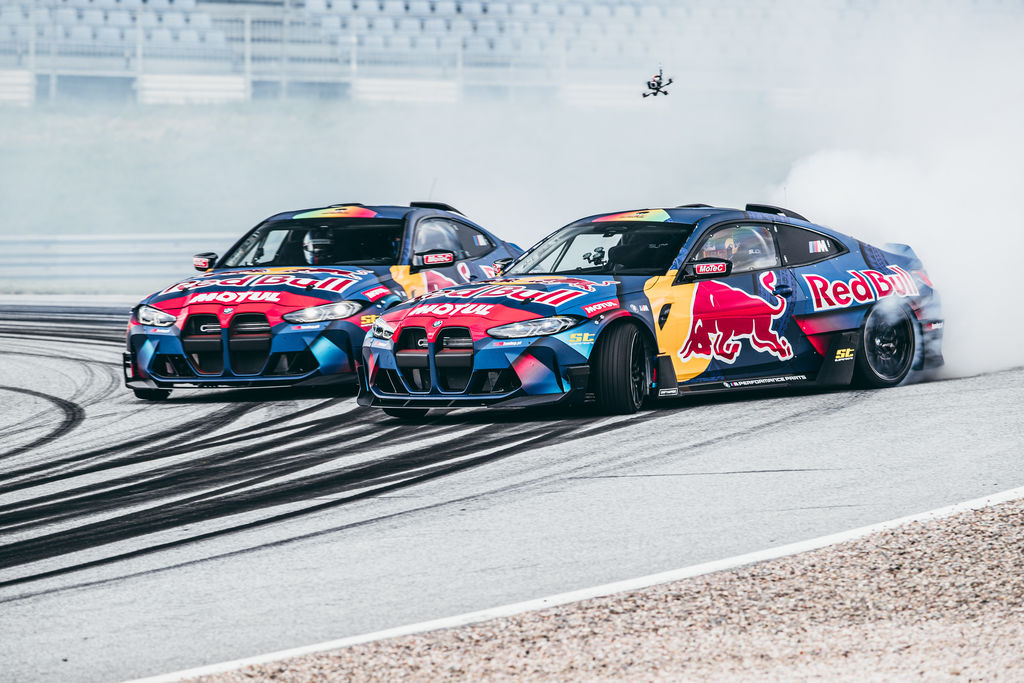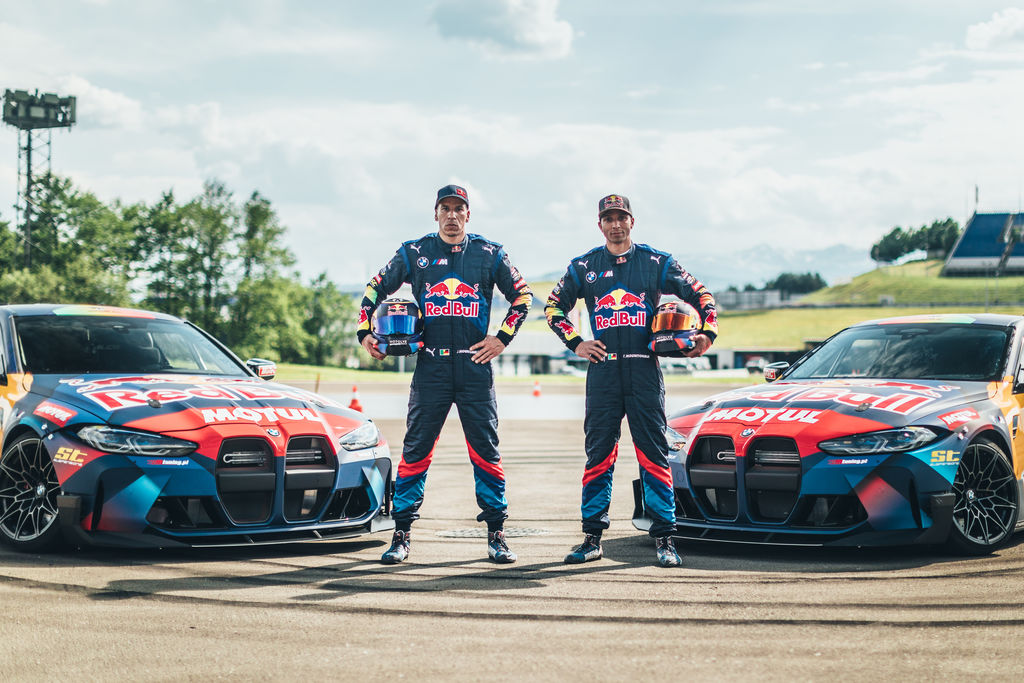Johannes: When we got the car, we took it down to the bare metal. The suspension and steering systems are completely bespoke to this car because we need the extreme angles that are so defining to drifting. The entire interior was removed, and safety and security systems were introduced.
Elias: For the outside of the car, we had the chance to work with a designer that really understood what drifting is all about. The car is 100mm wider at the front and 150mm at the rear. The widened front track was especially important because we needed to clear the chassis rail in combination with the extreme steering angle. A wider track at the rear gives us more grip and thus more speed. One other thing we had to greatly improve was the cooling. Because we doubled the power, we also needed to double the cooling, so now we have two radiators, one at the back and another in the front.
Johannes: As a cherry on top, we did one thing which had nothing to do with engineering whatsoever we just thought it looked cool: the exhaust pipes. We just thought it would look cool if they shot out from the top above the trunk lid.














